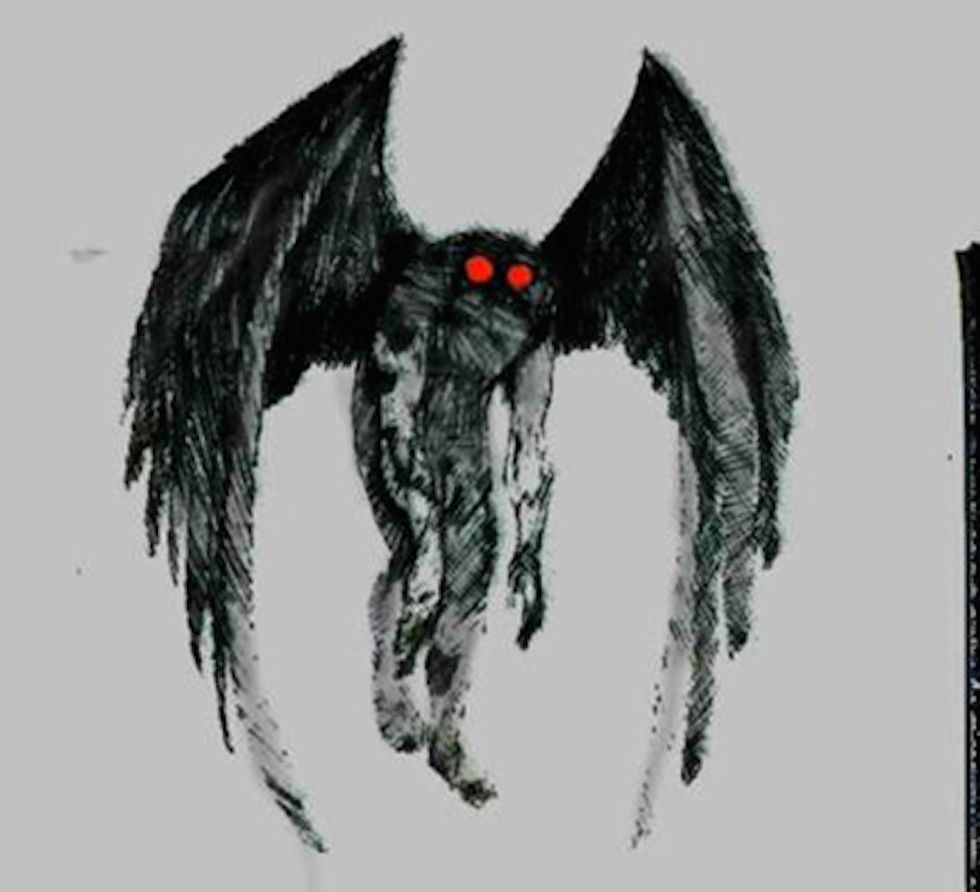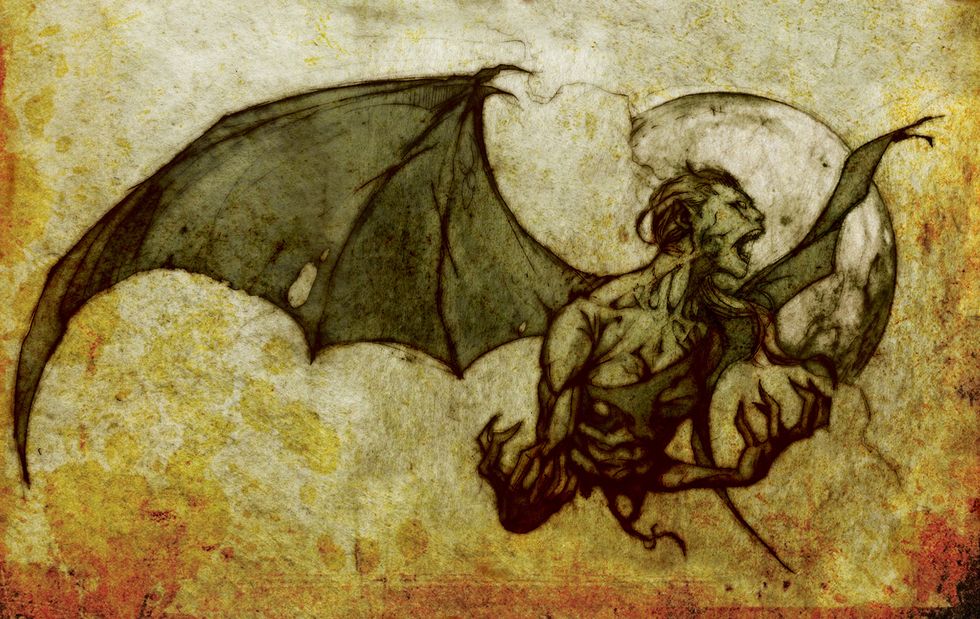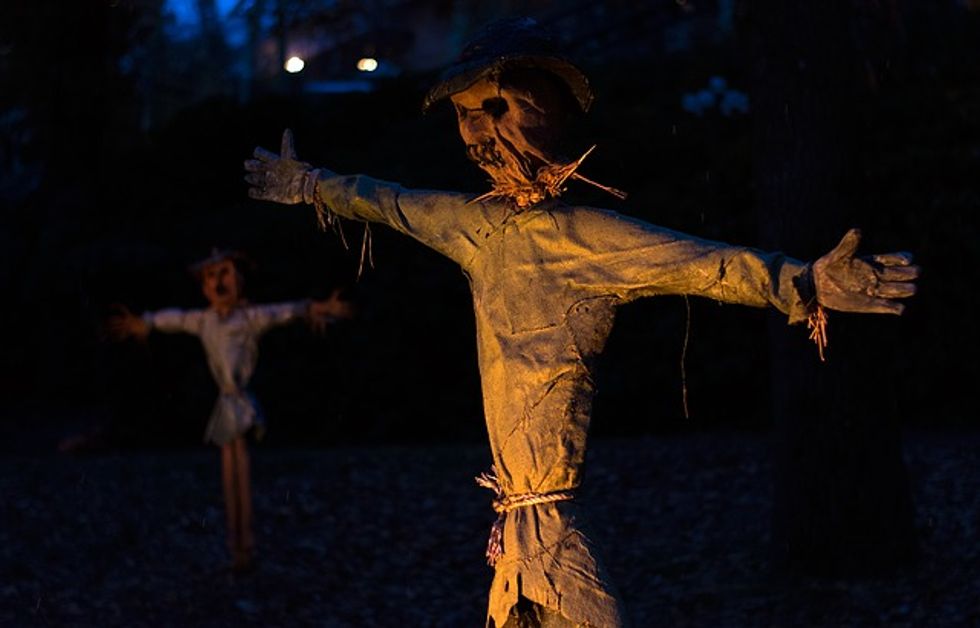The human race has managed to cultivate numerous dream visions of shadow creatures and dark entities across folklore and urban myth. Whether or not these entities are real does not take away from the sheer creep factor they possess.
Here are a handful of my favorites. Happy haunting -- and sweet dreams!
1. The Moth Man
The Moth Man is a paranormal creature of regional American folklore originating in West Virginia. It is described as a pitch-black humanoid figure of abnormally large size, possessing wings and an enlarged head housing owl-like crimson eyes. Various reports describe the eyes as glowing iridescent red.
Its first appearance in print is an eyewitness account in Point Pleasant, West Virginia from the 1960s. Initially, two couples out for the night caught sight a “large flying man” with “ten-foot wings” pursuing them on November 15th, 1966. Over the course of the next several days, several more sightings were reported, causing quite the excitement in Point Pleasant. The national news caught wind of the story, and it became a sensation.
About a year later, the Silver Bridge in Point Pleasant collapsed killing 46 people. With eerie coincidence, the sightings of the Moth Man suddenly ceased.
This has lead to all manner of speculation about the nature of this flying phantasm. Some believe it is the cause of the disaster, while others saw the monster as forewarning – some sort of premonition from outside the confines of reality.
The latin monstrum from which the word monster originates means to reveal. Indeed ancient civilizations considered monster sightings to omens of impending changes in the world. Perhaps the black Moth Man was an omen of terror.
2. Manananggal
This beauty from Philippine folklore is a particularly gruesome predator that hunts the unborn. This creature is a grotesque female, often hideous or rotting in appearance. Its most common depiction is that of a zombie-bat-woman with vampire fangs.
Most strikingly, it separates (yes, completely separates) its upper half from its lower half at the stomach to fly the night skies and into the rooms of victims. Once it has found suitable prey, it begins to suck the baby’s blood from inside its mother. Its tongue is long and serpentine, similar to a proboscis of an insect. This is the tool it uses to devour the blood.
The remaining legs are still mobile, but far more vulnerable. The best defense against this horror is to sprinkle salt on the bottom torso, which leaves the upper half unable to rejoin. When the morning comes, the sun will eliminate the creature.
If you’ve picked up on some similarities between the Manananggal and our friend the vampire, you’re not far off. Every major culture across the world has some version of a blood-sucking monster defeated by sunlight. One can only speculate as to exactly how and why, but it is a fascinating phenomenon nonetheless.
3. Giwakwa

This monster is a behemoth that stands as tall as the tallest white pine tree. It is a creature of Algonquin folklore. The Algonquin Native Americans occupy the Northeastern United States into Canada, particularly the Great Northern Woods that spans across New Hampshire, Vermont, and Massachusetts. There are differing details of what a Giwakwa looks like, but it is said they rolled in Balsam Fir sap, picking up the clutter on the forest floor – making them a hulking mass of indiscriminate forest, covered in brush, bones, and insects. Their teeth show deathly white in the moonlight just under their glowing yellow eyes.
The Giwakwas, as one would guess, are nasty to humans. Whether they are eating them or smashing them with the trunks of pine trees, they are horrors of the vast northern forest. They are associated with cannibalism, much like the Navajo legend of the Wendigo. When they are done killing, they begin eating.
Legend and folklore holds that many of these giants were individuals who have been cursed, either through malevolent witch or wizard or by committing a heinous crime like cannibalism. These monsters are depicted as having a heart of ice, or as having a human-shaped ice block in their stomach. The transformed monster can be returned to human form by melting the ice.
4. The Bubak
This is the boogeyman of the Czech people. The Bubak is a projection of fear, moving across the countryside in the dark, preying on innocent travelers. It does not have one set of descriptors, though it has been depicted as having goblin-like features, or the likeness of a gaunt scarecrow. There are also illustrations of the boogey wearing a pumpkin on its head, with a broad-brimmed straw hat.
It is said to hang around river banks and the edges of wooded areas. It will create a noise strikingly similar to that of a newborn baby crying. It uses this ploy to capture people, which it will take and kill, adding the body to its small cart pulled by several mangy black cats. The Bubak phenomenon takes place on the night of a full moon, where it weaves cloth out the souls of the people it has killed.
The bubak is significant as a folkloric creature in that it a boogeyman. This is the same type of monster described the world over that arrives to take away the mischievous. This is another version of the monster you heard about when you were ten or eleven. Boogeymen are most often amalgamations of several scary concepts and are particularly found of terrorizing children.



















